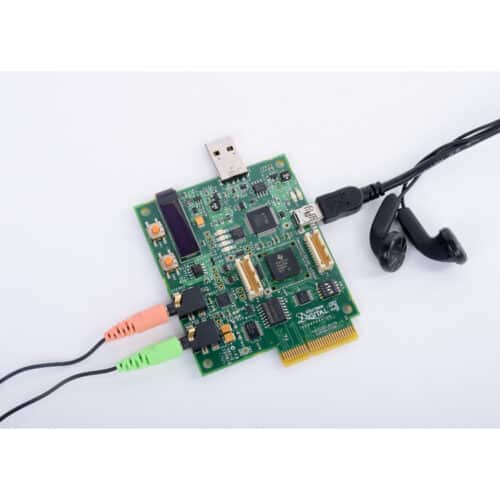The reference design simplifies speech recognition integration, offering customizable trigger words and low-power DSP technology for diverse applications.

Speech recognition technology is pivotal in enhancing accessibility and efficiency across various sectors. Allowing users to interact with devices and digital systems through voice commands opens up new possibilities for individuals with disabilities, improves productivity in professional settings, and enhances user interfaces. From facilitating hands-free operations in critical environments to assisting in language translation and learning, speech recognition technology is integral to breaking down communication barriers and enhancing safety. Its applications in healthcare, customer service, and data analysis further underscore its importance in the digital landscape. TIDEP0066, a speech recognition reference design by Texas Instruments (TI), simplifies the design process.
The design overview demonstrates the speech recognition features of the C5535 and C5545 devices utilizing the TI-embedded speech recognition (TIesr) library. It guides executing a voice-triggering example that displays a pre-programmed keyword on the C5535eZdsp OLED screen when a specific keyword is successfully detected. Additionally, this document outlines the steps to customize the trigger phrase. The speech recognition functionality of the C5535 and C5545 devices highlights the efficiency and adaptability of this affordable, low-power DSP in embedded settings.
This technology’s featured applications include voice triggering for embedded devices, acoustic analysis, and wireless audio devices such as headsets, microphones, and speakerphones. Additionally, it plays a crucial role in industrial controls, showcasing its versatility and broad utility in various technological arenas.
The design includes comprehensive resources such as software source code, schematics, a bill of materials, and design files. It applies to any application that requires voice triggering and offers the flexibility of customizable trigger words, making it highly adaptable for various uses.
TIesr is a speaker-independent automatic speech recognizer (ASR) based on Hidden Markov Models (HMM). It features an efficient fixed-point implementation of a grammar-based recognizer, which requires minimal memory and processing. The algorithm is designed with robust background noise suppression and compensation techniques. Additionally, it includes confidence measuring capabilities to enhance flexibility in handling misrecognition. The voice activity detection in TIesr is determined by analyzing several factors, including the energy in the signal, autocorrelation, and matching to silence acoustic models.
Based on the DSP core, the DSP prioritizes high performance and low power consumption through increased parallelism and energy efficiency. This cost-effective DSP excels in embedded speech recognition applications, as evidenced by this reference design includes C code and binaries for a voice trigger demonstration detecting keywords through the device’s microphone.
TI has tested this reference design. It comes with a bill of materials (BOM), schematics, assembly drawing, printed circuit board (PCB) layout, and more. The company’s website has additional data about the reference design. To read more about this reference design, click here.






